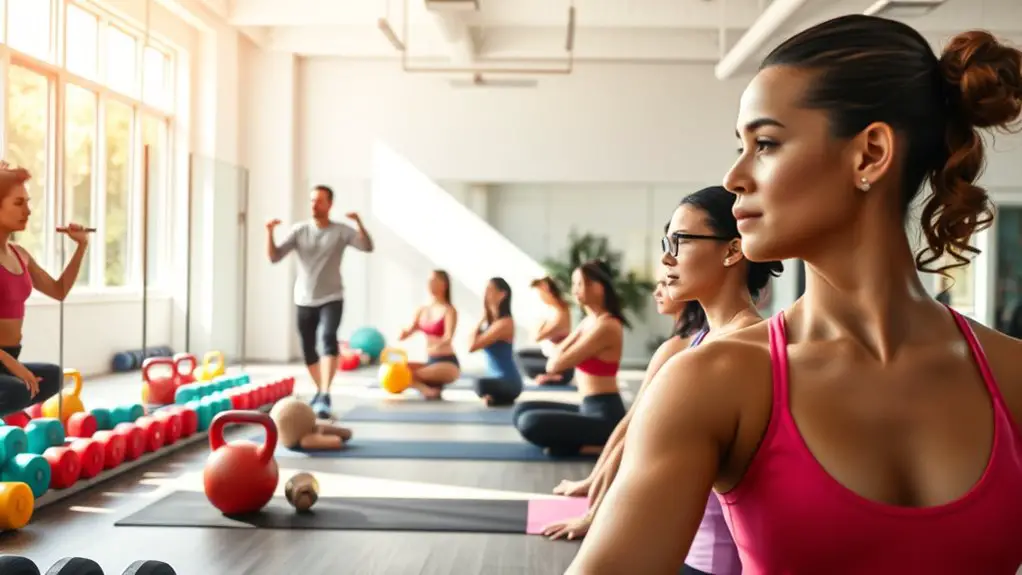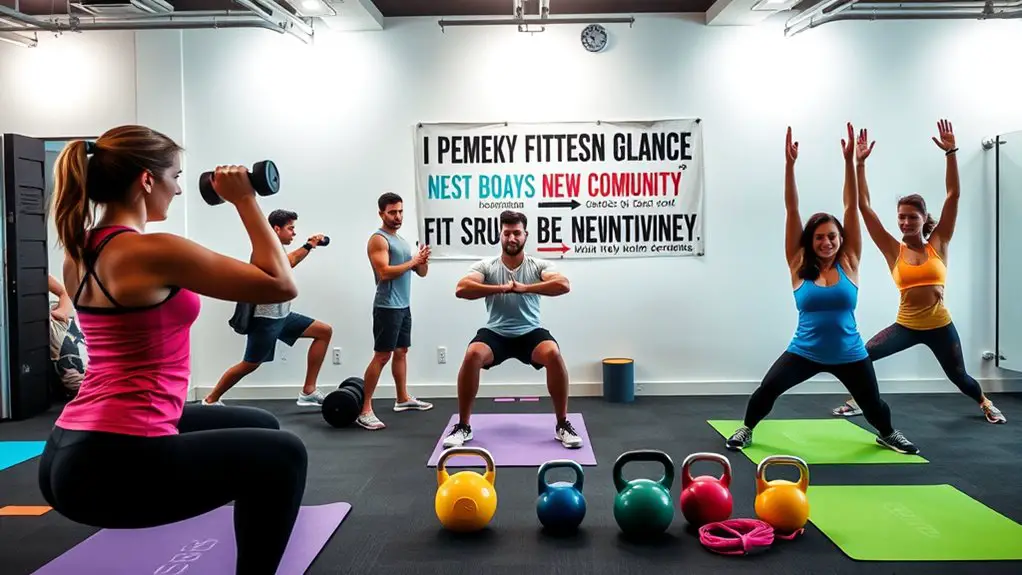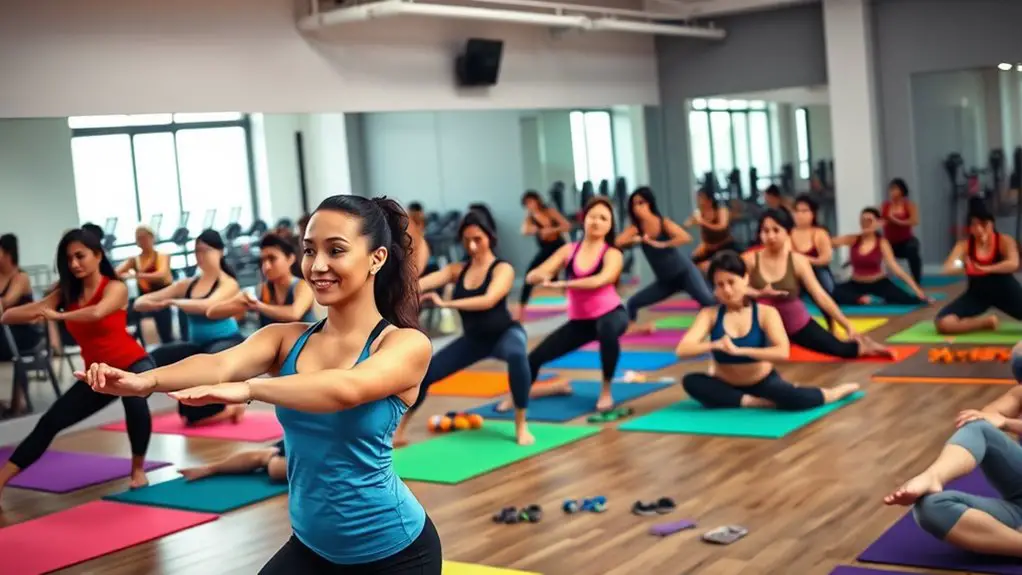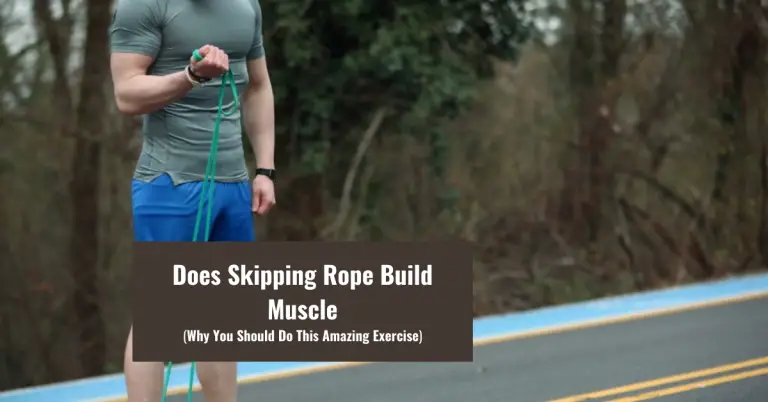The Best 3-Day Gym Routine for Beginners

To kickstart your fitness journey, try a balanced 3-day gym routine. On Day 1, focus on full-body strength training with squats, push-ups, and deadlifts. For Day 2, mix cardio and core workouts—think running and bicycle crunches. Finally, spend Day 3 on flexibility and recovery, incorporating stretches and light yoga. Don’t forget to warm up and cool down properly, and keep track of your progress. There’s more to discover about staying motivated and fueling your body for success!
Understanding Your Fitness Goals

How do you know what you want to achieve at the gym? It starts with effective goal setting. Take a moment to think about your fitness aspirations—whether it’s losing weight, building muscle, or improving endurance. Make sure your goals are specific and realistic, as this will give you a clear direction.
A fitness assessment can be incredibly helpful. Consider tracking your current fitness level through simple tests, like measuring your strength or endurance. This not only provides a benchmark but also helps identify areas for improvement while ensuring you stay safe.
Essential Equipment for Beginners
Having the right equipment can make a significant difference in your workout experience as a beginner. Investing in essential tools is vital for safety and effectiveness. Here’s a quick guide to the beginner gear you’ll need:
| Essential Equipment | Purpose |
|---|---|
| Dumbbells | Strength training |
| Yoga mat | Comfort and stability |
| Resistance bands | Versatile workouts |
| Water bottle | Staying hydrated |
| Comfortable shoes | Injury prevention |
These items will help you build a solid foundation as you start your fitness journey. Make sure to choose weights that suit your strength level, and always prioritize safety. With the right beginner gear, you’ll feel more confident and motivated to stick to your routine. Remember, investing in your equipment is investing in your health! Additionally, wearing comfortable clothing is essential for free movement during your workouts.
The Importance of Warm-Up and Cool Down

Before diving into your workout, taking time for a warm-up and cool down is essential for preventing injuries and enhancing performance. A proper warm-up increases blood flow to your muscles, improves flexibility, and readies your body for the physical demands ahead. You’ll notice the warm-up benefits as you feel more agile and less prone to strains.
After your workout, don’t skip the cool down techniques. Gradually bringing your heart rate back to normal helps reduce muscle soreness and stiffness. Stretching post-exercise enhances flexibility and aids recovery by promoting relaxation in your muscles.
Incorporating these practices into your routine not only protects you but also maximizes your workout results. By prioritizing both warm-ups and cool downs, you’re setting yourself up for long-term success in your fitness journey. Remember, safety always comes first!
Day 1: Full-Body Strength Training
As you commence your fitness journey, Day 1 focuses on full-body strength training, which is essential for building a solid foundation. This routine will engage multiple muscle groups, helping you develop strength while promoting safety.
Here are five key full body exercises to include:
- Squats: Strengthen your legs and core.
- Push-Ups: Target your chest, shoulders, and triceps.
- Deadlifts: Work your back and hamstrings.
- Lunges: Improve balance and leg strength.
- Planks: Build core stability and endurance.
Before starting, make sure you warm up properly, and pay attention to your form to prevent injuries. Start with lighter weights to get comfortable with each movement, gradually increasing as you gain confidence and strength. Incorporating alternative exercises can help build leg and hip strength effectively. Remember, consistency is key, and listening to your body will help you progress safely on your strength training journey.
Day 2: Cardio and Core Workout

On Day 2, you’ll focus on cardio and core workouts, which are crucial for building endurance and stability. Cardio helps improve your heart health while burning calories, and core strength exercises are significant for overall body support. Together, these workouts will enhance your fitness journey and prepare you for more advanced routines. Incorporating activities like skipping rope can elevate your heart rate and effectively burn calories.
Importance of Cardio
While many beginners might focus primarily on strength training, incorporating cardio into your routine is crucial for overall fitness. Cardio not only boosts your endurance but also offers numerous health benefits. Here are some key cardio benefits to take into account:
- Improves heart health
- Aids in weight management
- Enhances mood and mental health
- Increases calorie burn
- Builds lung capacity
There are various cardio types to choose from, including running, cycling, swimming, and group classes. When selecting a cardio workout, opt for something you enjoy to guarantee consistency. Remember to start at a comfortable intensity to keep your workouts safe and effective. Balancing cardio with strength training will help you achieve a well-rounded fitness regimen.
Core Strength Exercises
Core strength is essential for stability, balance, and overall fitness, making it a vital component of your Day 2 workout. Incorporate exercises like plank variations to build endurance and stability. Bicycle crunches and Russian twists will engage your obliques, while leg raises focus on your lower abs. Don’t forget mountain climbers for a dynamic core workout. A stability ball can also enhance your routine; try Pilates exercises or the dead bug for better control. For a solid finish, include the hollow hold to challenge your entire core. Remember to maintain proper form to avoid injury and guarantee you’re safely strengthening your core. This balanced approach will help you build a strong foundation for all future workouts.
Day 3: Flexibility and Recovery
On Day 3, it’s all about flexibility and recovery to help your body bounce back from workouts. Stretching not only improves your range of motion but also reduces the risk of injury. You’ll also learn effective recovery techniques to keep you feeling your best as you progress in your fitness journey.
Importance of Stretching
Stretching is essential for your overall fitness journey, as it not only enhances flexibility but also aids in recovery. Incorporating both dynamic stretching before workouts and static stretching afterward can greatly improve your performance and prevent injuries. Here’s why you shouldn’t skip it:
- Improves flexibility: Increases your range of motion.
- Reduces injury risk: Prepares muscles for activity and helps them recover.
- Enhances performance: Better flexibility can boost your workout effectiveness.
- Promotes blood circulation: Aids in nutrient delivery to muscles.
- Relieves muscle tension: Eases tightness and soreness post-exercise.
Recovery Techniques Explained
After a solid workout routine, recovery is just as important as the exercises themselves. To aid your muscles, consider incorporating active recovery, like light walking or yoga, which keeps blood flowing without overexerting yourself. Foam rolling can help alleviate muscle tension and improve flexibility, making it a great tool post-workout. Don’t forget hydration strategies; drinking enough water is essential for recovery and overall health. Prioritize sleep importance, as quality rest allows your body to repair itself effectively. Massage therapy can also provide relief and reduce soreness. Finally, practice breathing techniques to help manage stress and promote relaxation, ensuring you’re ready for your next workout. By focusing on these recovery methods, you’ll set yourself up for success!
Tips for Staying Motivated
Staying motivated can be challenging, especially when you’re just starting out on your fitness journey. Here are some tips to help keep your spirits high and your goals in sight:
Staying motivated on your fitness journey can be tough; keep your goals in sight with these helpful tips.
- Set realistic goals: Break down your fitness journey into achievable milestones.
- Goal visualization: Picture yourself reaching your goals each day to reinforce your commitment.
- Find a workout buddy: Partnering with someone can make workouts more enjoyable and hold you accountable.
- Track your progress: Keep a journal or use apps to celebrate small victories along the way.
- Mix things up: Variety keeps workouts fresh and prevents boredom, so try different exercises or classes.
- Recognize the need for rest days to avoid burnout and maintain long-term motivation.
Nutrition Basics for Beginners
Maintaining motivation in your fitness journey is closely tied to how you fuel your body. Understanding nutrition basics can make a significant difference. Start by focusing on macronutrient balance—carbohydrates, proteins, and fats. Each plays a vital role in supporting your workouts and recovery. Aim for a blend that fits your energy needs and fitness goals.
Don’t overlook hydration importance, either. Staying properly hydrated helps your body function efficiently and can enhance your performance. Water should be your go-to beverage; consider drinking it before, during, and after your workouts.
Incorporating whole foods, like fruits, vegetables, lean proteins, and whole grains, can provide the nutrients necessary to keep you energized. Remember, it’s not just about what you eat, but also how much. Skipping rope for just 5 minutes can burn approximately 60 calories, making it an excellent addition to your routine. Listen to your body and adjust your portions as needed, ensuring you feel satisfied and energized throughout your fitness journey.
Tracking Your Progress
Tracking your progress is essential for staying motivated and achieving your fitness goals. By consistently measuring your improvements, you’ll see how far you’ve come, which can boost your confidence and keep you on track. Here are some effective measurement methods you can use for progress tracking:
- Weight: Weigh yourself weekly to monitor changes.
- Body Measurements: Use a tape measure to track your waist, hips, and arms.
- Progress Photos: Take photos every few weeks to visually document changes.
- Workout Logs: Write down your reps and weights to see strength improvements.
- Fitness Tests: Assess your endurance with timed exercises, like a one-mile run. Additionally, remember that visible improvements in body composition can be a key indicator of your progress.
Frequently Asked Questions
How Long Should I Rest Between Sets During Workouts?
Imagine you’re a traveler charting a winding path. To reach your destination safely, you need to pause and gather strength. Similarly, during workouts, your rest duration between sets depends on set intensity. If you’re lifting heavy or pushing hard, take 1-3 minutes to recover. For lighter sets, 30-90 seconds might suffice. These moments of rest aren’t just breaks; they’re essential for safety and ensuring you’re ready for the next leg of your journey.
Can I Do This Routine at Home?
Absolutely, you can do this routine at home! Just make certain you’ve got enough space and suitable equipment options. You can use resistance bands, dumbbells, or even your body weight for a safe workout. If you’re unsure about any exercise, consider watching tutorial videos to guarantee proper form. Always listen to your body, and if something feels off, don’t hesitate to modify the movement or take a break. Safety first!
What Should I Wear for My Workouts?
When you’re choosing what to wear for your workouts, focus on comfortable workout attire that allows for movement. Opt for moisture-wicking fabrics like polyester or spandex; they help keep you dry and reduce chafing. If you’re exercising outdoors, consider layering for temperature changes. Don’t forget supportive footwear; it’s essential for safety and injury prevention. And remember, wearing the right gear can enhance your performance and make your workouts more enjoyable.
How Can I Prevent Injuries While Exercising?
You’re at the gym, ready to crush your workout, but you’re also thinking about staying safe. Injury prevention starts with proper warm-up exercises; they’re essential for preparing your muscles and joints. Spend at least 5-10 minutes doing dynamic stretches and light cardio to get your blood flowing. Remember to listen to your body—if something feels off, don’t push it. It’s all about finding that balance between pushing yourself and staying injury-free.
Is It Normal to Feel Sore After Workouts?
It’s completely normal to feel sore after workouts, especially if you’re new to exercising. This soreness, known as delayed onset muscle soreness (DOMS), can vary in intensity. It’s a sign your muscles are adapting and recovering. To aid muscle recovery, make sure you’re warming up properly, cooling down, and staying hydrated. Listening to your body is key—if soreness turns into pain, it’s important to rest and consult a professional to prevent injuries.





